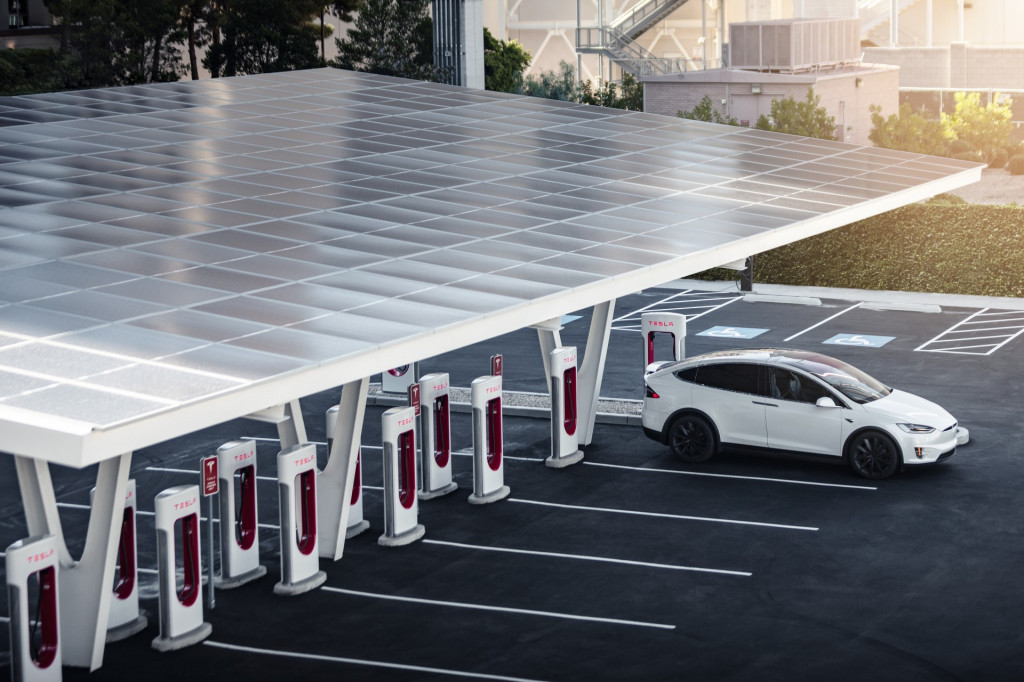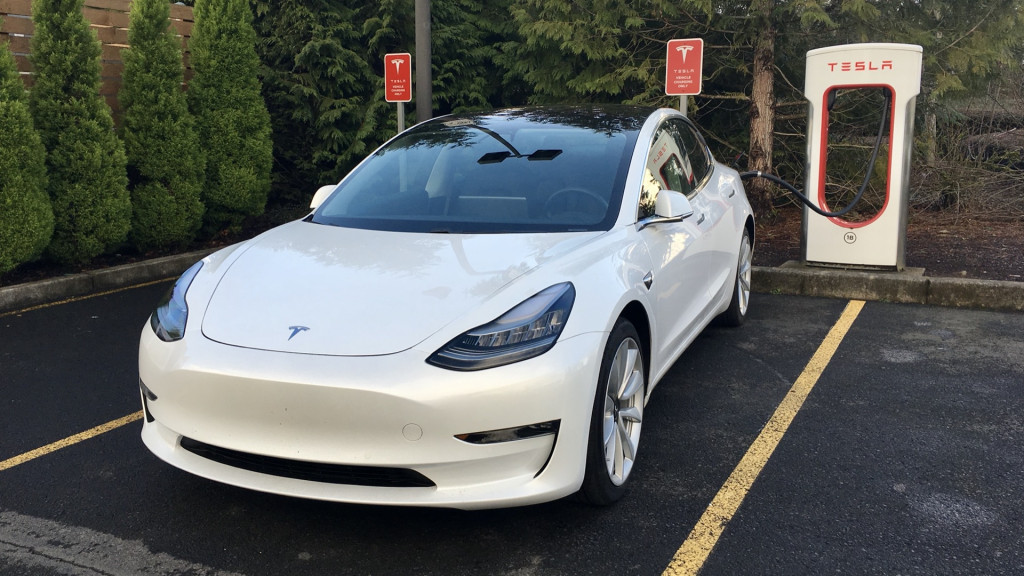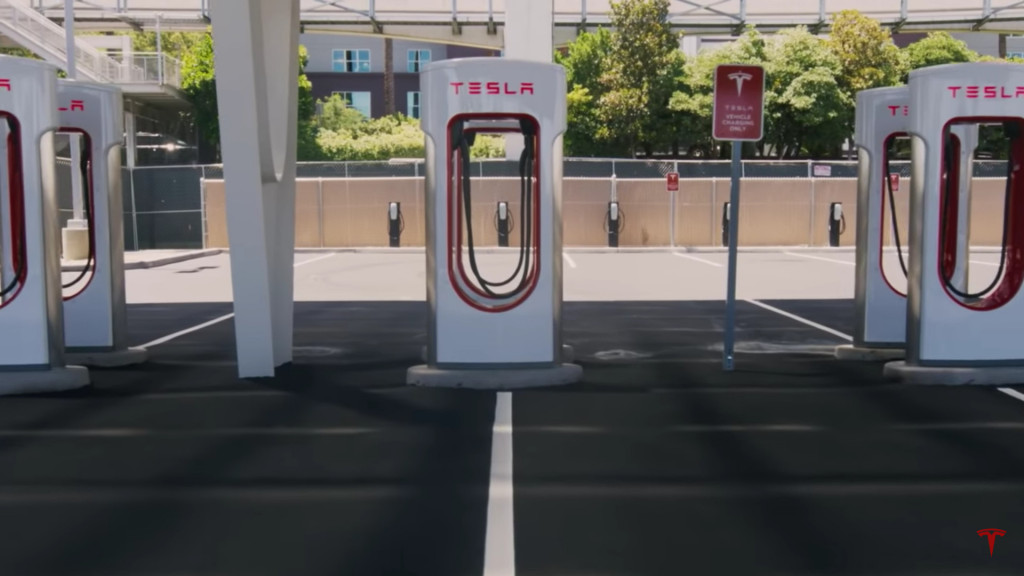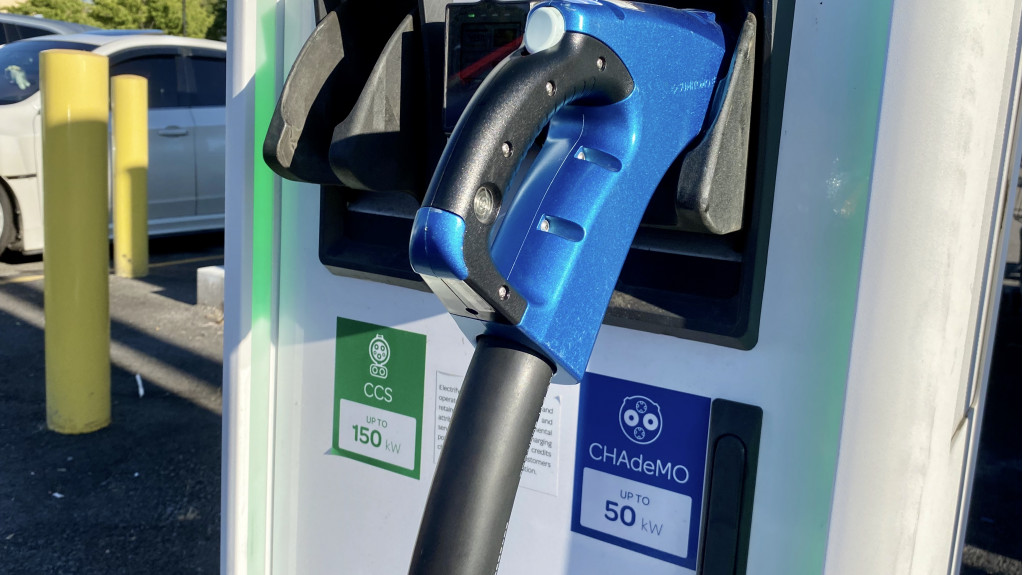The term “record-setting” has applied to nearly every set of quarterly Tesla sales and delivery results, for years.
But on Wednesday, Tesla made clear in its third-quarter call that it’s also time to accelerate the build-out of its Supercharger network, so as to accommodate that rapidly expanding fleet of Tesla vehicles.
As we emphasized in July, in our most recent yearly check-in on growth of charging networks with each of the standards, the Supercharger network had been growing at a slower pace in stations and connectors versus CCS—and even the essentially obsolete CHAdeMO standard—versus the year before.
According to the Department of Energy Alternative Fuels Data Center, today Tesla currently has 1,165 station locations in the U.S., versus 3,877 station locations for EVs with CCS-format DC fast-chargers, which are still far less common in the nation’s cumulative EV fleet. Tesla holds an advantage in actual power ports though, with 11,593, versus 5,368.

Tesla Supercharger station V3, Las Vegas
While Tesla has doubled the size of the Supercharger network in the last 18 months, it plans to triple it over the next two years, according to the company’s VP for drive systems and energy engineering, Drew Baglino.
On the quarterly call, Baglino said that while Tesla still has work to be done in expanding capacity, average congestion on the network has actually decreased over the past 18 months. Although that’s during the pandemic, it’s especially impressive as it’s been during a period in which Tesla demonstrated tremendous sales growth.
To address local congestion in the short term, Tesla is deploying mobile Superchargers and aiming to introduce pricing strategies that encourage more off-peak usage, Baglino said.

Tesla Model 3 at Supercharger, Sandy OR
Baglino also called the company’s latest technology, with its new generation of battery packs and 250-kw charging hardware, as “pretty incredible,” and an important component to Supercharging capacity, because that allows more charging sessions per connector and, of course, cuts the time spent parked and charging.
There could be a limit to how quickly Tesla can charge its cars though, even headed toward a potential next-generation structural pack. As Lucid CEO Peter Rawlinson recently suggested, Tesla’s 400-volt network will eventually need to be upgraded to higher voltage standards at great expense, with networks like Electrify America, already set for charging at up to 1,000 volts, potentially giving other automakers like Lucid a second-mover advantage.
In the meantime, Tesla is looking at the other tools it has—like software and interface.

Tesla Supercharger V3 station - Las Vegas Strip
“Dynamic routing to avoid busy Superchargers, that’s actually really helpful,” Baglino said. “We take the real-time busyness of the stations into account when choosing where to navigate people on their road trip.”
“And then beyond that we’re also continuing to improve the trip planner itself and how it estimates how much energy people use so it’s not too conservative in asking people to charge more than they need to, which is another thing that can delay a total trip,” he added.
Tesla CEO Elon Musk confirmed in July that Tesla will be making its Supercharger network available to other EVs later in the year, with the Tesla app and a plug adapter that might be available at the station. The company plans to help avoid some of the bottlenecks by charging extra for slow-charging non-Tesla EVs.

Electrify America hardware with CCS and CHAdeMO - Hood River, Oregon - July 2020
Tesla drivers also have a few other options in the U.S., such as using a CHAdeMO adapter (for a slower charge) or using one of a limited number of urban EVgo locations that offer Tesla connectors. A CCS adapter for North American customers is reportedly coming soon.
With only three-fourths of the year reported, Tesla has already delivered more than 25% more vehicles than in all of 2020. It also reported that it reached an “annualized production run rate” of more than 1 million cars (globally) towards the end of the quarter. With Tesla ranks growing at that rate, owners are definitely going to need all those charging options.













